Religions and acts of violence


Violence: An international journal is launching a call for papers on the theme “Religions and acts of violence. This special issue will be coordinated by guest editor Mohamed-Ali Adraoui, Assistant Professor, Radboud University.
For its general articles’ section, Violence: An international journal is also welcoming papers that deal with issues of violence and exiting violence.
Dossier: Religions and acts of violence
Mohamed-Ali Adraoui, Assistant Professor, Radboud University.
Where are we in the study of religions and acts of violence? Much of the literature on religions today has focused on modern Islamic movements, yet here, with the spread of several groups in various contemporary religious traditions, we have a full-scale landscape cases studies in the field of religions and acts of violence.
Whether linked to specific groups explicitly affiliated with religions, or in more diffuse and less organized forms, forms of violence (physical and/or symbolic) borrowing from language and the religious imaginary have been the subject of renewed interest for several decades now (Juergensmeyer, Kitts and Jerryson 2013, Kaplan 2015, Juergensmeyer 2020).
Within a large number of religions, within Hinduism, Judaism, Buddhism, Islam, Christianity in addition to many other now visible all over the world, violent configurations involve religious imaginations and actors claiming to represent faith communities offer researchers the opportunity to question, confirm or refute the state of knowledge on religious forms of physical and/or symbolic violence. These configurations can be said to defend the interests of specific political-religious parties within some local or national contexts, or broader designs and worldviews of the religious communities some actors see themselves as worthy representatives of. Moreover, when and under what conditions does it become possible to speak of a "religious" form of violence, given the difficulties of defining this dimension and its autonomy in the study of particular types of aggression and vehemence? All of these elements are essential, not only to understand the sociology of certain types of violence, but also to grasp possible mechanisms for ending violence. For instance, do religious types of conflictuality make it easier or more difficult to put an end to certain violent dynamics?
It is the reason why Violence: An international journal is launching this call for papers, proposing some leads, which are obviously not exhaustive, neither focusing on contemporary manifestations of these types of violence.
This special issue could for instance take a closer look at some aspects of the theme of "Religions and Acts of Violence". It will take a close look at a variety of religious traditions and geographical and historical situations, in order to avoid as far as possible, the distorting prisms of current events. The aim is to offer an in-depth, comparative analysis of the phenomena of violence and the emergence from violence involving religious elements (actors, discourses, imaginaries, strategies, targets, both inside and outside cases of criticism etc.).
On a conceptual level, in what ways have metaphysics and the conditions of violence been and still are thought of in various religious traditions? The authors who address these questions may or may not be specialists in doctrinal content and may develop a historical-theological analysis. Possible issues to be addressed include: How are violence and truth articulated in certain religions? What is just or necessary violence? Does it really make sense to speak of a "religious conflict"? Is a religious justification for war enough to evoke a war of religions?
Other contributions could look at certain historical-sociological dimension of religiously referenced forms of violence. Through specific examples, which may be entrusted to historians, political scientists, sociologists or anthropologists, one can analyze the specific conditions and contexts in which violence, formulated and legitimized in a religious and sacred manner, has been deployed. Empirical examples could be drawn from all regions of the world, so as to provide as varied a description as possible of the configurations in which violence and religion are intertwined. Possible geographical, doctrinal, social and political similarities and differences will be discussed. Finally, an interesting question could be that of the reading or rereading of certain religions, which orient them towards strategies of political and metaphysical violence. Today, for example, we can observe a number of millenarian and eschatological constructions within certain religions, in the name of which a veritable "theology of war and the end of the world" is being put in place. So, what can we say about these phenomena involving not only a religious conception of the social and political order, but also a sense of history, which certain groups intend quite simply to put an end to in order to bring about celestial times? These questions will also provide an opportunity to take a closer look at the configurations articulating politics and religion: Is it possible to draw up a typology of conflicts involving actors with a religious frame of reference? Is it possible to isolate the categories of "politics" and "religion" in a conflict? Are there indicators to measure the influence of a religious factor on a social phenomenon?
This special issue can also focus on the dynamics of preventing and ending violence and can address specific theoretical and empirical cases in which religious actors, discourses and imaginaries have intervened to prevent, initiate, reinforce or accompany a phenomenon of prevention or ending of violence. More specifically, how can one study the role of religion in the desire to prevent and put an end to violence has been positive or negative, and highlighting any specific features of religious intervention in the emergence from violence. By way of illustration, we might consider the issue of repentance, whereby certain actors may, in the very name of the religion for which they chose to fight, seek the means and justifications for ending violence and armed conflict. Some conflicts, such as those in Latin America, have ended with the protagonists revisiting their religious heritage, or even changing their religion, in order to condemn past violence but also to be personally "reborn" to a new moral reality, that of forgiveness and atonement. Similarly, in some cases, the emergence from violence has mobilized religion to retrospectively justify past crimes. Certain criminals have thus been able to inscribe their actions during conflicts in a spiritual and religious repertoire, in order to pass themselves off as the "armed arms" of a cosmic enterprise of which they were, in the final analysis, mere servants. What about these a posteriori uses of religion?
About Violence: An international journal
Today, violence, in all its forms, constitutes a vast field of research in the social sciences.
The same is not true of preventing and exiting violence, which do not have their own well-structured space within the humanities. Much more empirical than theoretical, understanding of these issues is produced more by actors (NGOs, associations), experts, and practitioners than by social science scholars.
Violence: An international journal endeavors to gather together and support a large community of scholars and practitioners, focusing on two complementary yet distinct scientific and intellectual issues: the analysis of violence, in its diverse manifestations, and preventing and exiting violence.
In doing so, Violence: An international journal aims to develop understanding about violence, but also to build up a delineated field of research for preventing and exiting violence, with its contributions and debates.
Each issue opens with a series of general articles, which are be followed by a theme section, composed by articles, debates and interviews. Violence: An international journal also makes a special effort to link together research in the social sciences and other fields of knowledge, forging bonds with literary and artistic circles in particular, with contributions dealing with exiting violence through the lens of art.
Violence: An international journal has the ambition to reach a readership composed of academics, but also a larger audience, including the actors involved in preventing and exiting violence: NGOs, associations, politics, legal experts, and civil society. Articles for Violence: An international journal will nonetheless go through the usual process of academic journals. Once accepted by the editorial board, each article will be sent for peer-review. Changes may then be asked to the author.
The journal is published twice a year in English by Éditions de la Maison des sciences de l’homme and SAGE Publications.
Guidelines
Articles should include a summary, a detailed bibliography and a short biography. Each article should be between 5,000 and 8,000 words in length (including footnotes, bibliography, biography). It should be sent, preferably, in Word format and use, systematically, Harvard Reference Style, as follows:
Brague, R. Sur la religion, Paris: Flammarion, France, 2018.
Cavanaugh, W. T. The Myth of Religious Violence: Secular Ideology and the Roots of Modern Conflict, New York: Oxford University Press: New York, 2009.
Juergensmeyer, M. Ed. Violence and the Sacred in the Modern World, Abingdon: Routlege, 2020.
Juergensmeyer, M., Kitts, M., Jerryson, M. The Oxford Handbook of Religion and Violence, New York: Oxford University Press, 2013.
Kaplan, J. Radical Religion and Violence, Abingdon: Routlege, 2015.
Murphy, A. R. Ed. The Blackwell Companion to Religion and Violence, John Wiley & Sons, 2011.
We ask you to pay particular attention to the quality of your writing style.
To contribute to Violence: An international journal, please send an article, fully written, either for the general articles’ section or for a theme section.

« Violence and emotions » dossier
Articles must be sent before April 30, 2025.
--
Varia articles
Articles can be sent throughout the year.


Atlas: France > China

Herman Diederiks Prize

DEA Programme


